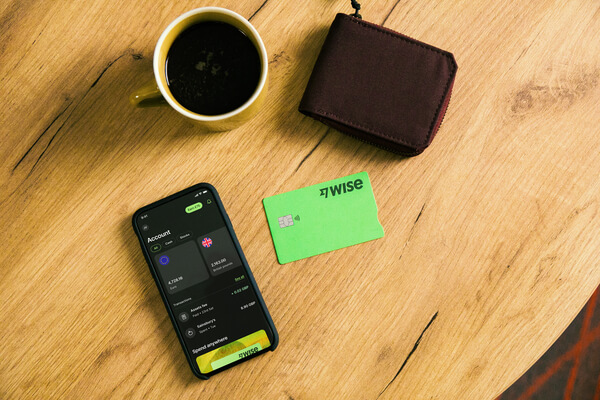How to open a bank account online in Australia: Eligibility, steps, and top providers
Wondering if you can open a bank account online in Australia? Discover the options available and how to open a bank account online.

Thanks to a vibrant economy and a high standard of living, Denmark is a popular destination for expats. Despite being a diminutive nation of under six million inhabitants, the cosmopolitan city culture and industry demand for skilled workers mean many people are moving north on a permanent basis.
If you're ready to experience the laid back Scandinavian lifestyle with a move to Denmark, then you're going to need a bank account. Life can be exhilarating there - but it certainly isn't cheap. Here's what you need to know to get started.
Opening a bank account in Denmark is fairly straight forward, although you will need to bring along a fixed set of documents, some of which must be notarised. Banks have their own policies on this, so check before you visit the branch.
In some cases, a fee is applied when opening an account - such as when opening a specialist student account for non EU/EEA students. Generally, though, opening an account should not cost you.
To open a standard account you will need:
Some accounts will have additional requirements, such as proof of your income levels. However, as long as you have a CPR number (which is issued to EU citizens upon registration, and others upon receipt of a residence permit), you have the right to open at least a basic bank account.
If you have an account with a large international bank, it is worth checking if they operate in Denmark. If they do, then transferring to a Danish account could be a fairly simple process.
Danske Bank offer the opportunity to start the account application process online or over the phone. However, whether or not you can fully complete the application will depend on your circumstances - you may still need to visit a branch upon arrival to show your documents. Not all accounts are offered with online application, so read the small print if this is important to you.
To open a bank account in Denmark, you need a CPR number, which is issued once you have become a resident. Therefore, you can not open an account as a non-resident. If you’re about to move to Denmark and want to get started before you arrive, you may be able to start the application process online and then show your CPR card in person once you arrive.

Old-world bank accounts only work properly in one country. They hold money only in one currency. And it gets expensive when you try to use them across borders. Wise's new Borderless accounts solve all of this.
Now you can send, receive and organise your money internationally, without crazy fees or even-crazier exchange rates – just a small, fair charge when your money moves between currencies.
Denmark has a robust and safe banking system, with a good choice of local and international banks. You can either choose one of the large national banks listed below, or you may be able to transfer an existing account with a global bank to their Danish partners.
Most bank websites have their details, terms and conditions listed in English, making it easy to choose between accounts.
Four major national banks are listed below to give you a kickstart to your finding the best bank for your needs:
| Danske Bank | Danske Bank are one of the largest banks operating in Denmark, and cover the whole Scandinavian and Baltic Region. They offer specialist products for students and young people, as well as a variety of accounts with specific perks such as monthly cashback. Danske Bank offer online banking in English (which not all Danish Banks do) - a distinct advantage if your Danish is not up to scratch. |
| Nordea | Another of the large banks serving the entire region, Nordea offer a full range of banking products. Although their website is not fully in English, you can request a call back in English to discuss what you need from a new account. |
| Nykredit | Nykredit is a giant financial services institution that has been operating for over 150 years in Denmark. They offer a whole range of financial products, from banking to insurance and estate agency. If online banking via an app is your thing, then this might be the bank for you - they have won several awards for their online and app based banking options. |
| Sydbank | With branches in Denmark and Germany, Sydbank is a full service banking house. They have 115 branches, and as well as offering a wide range of banking products, contribute broadly to philanthropic projects. |
Opening a bank account in Denmark should not be too difficult. If you have questions, bank staff are highly likely to speak English and all offer online chat or phone services to answer quick queries. Normal banking hours in Denmark mean that branches will be closed over the weekend, but with slightly extended opening times on Thursday evenings. Bear that in mind when seeking advice about opening your account.
When you open a bank account in Denmark, it's important to read the small print - especially when it comes to banking fees and charges.
Some banks will apply regular charges to keep your account open or use a credit or debit card. There may also be a set fee for withdrawing cash from ATMs operated by different banks. Although usually relatively small, these fees and charges mount up over time.
Watch out also for high fees if you need to regularly move money between accounts which use different currencies. This can be a big problem if you derive income in a different currency and need to switch it to pay for daily life in Denmark.
Using a bank to transfer currency across national borders is costly. As well as a charge for processing the transaction, the bank’s profit will be rolled into the exchange rate.
Instead, for international money transfers with low, transparent fees, and using the mid-market rate, try Transferwise.
*Please see terms of use and product availability for your region or visit Wise fees and pricing for the most up to date pricing and fee information.
This publication is provided for general information purposes and does not constitute legal, tax or other professional advice from Wise Payments Limited or its subsidiaries and its affiliates, and it is not intended as a substitute for obtaining advice from a financial advisor or any other professional.
We make no representations, warranties or guarantees, whether expressed or implied, that the content in the publication is accurate, complete or up to date.

Wondering if you can open a bank account online in Australia? Discover the options available and how to open a bank account online.

Compare the best high-interest savings accounts in Australia. Our guide breaks down interest rates, and fees to help you find an account to grow your savings.

Looking for how to open a bank account with Virgin Money in Australia? We’ve got you covered. Here’s the process, fees and what you need to know.

Learn how to close your Revolut Australia account. The steps, options and important need-to-knows before your begin.

If you’re a student juggling study alongside work and social commitments, ensuring you have reliable and easy access to your money is essential. Choosing a...

Coming into student life something you might not think to address straight away is your banking. Many Australian banks offer accounts designed for students,...